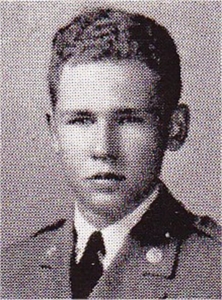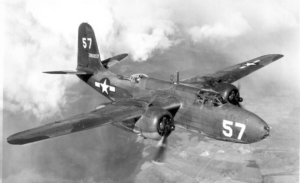Scroll of Honor – Charles Henderson Franks
Radar Training
Written by: Kelly Durham
The Allies shifted from defeat and defense to offense and victory in 1942. Midway and North Africa had put the Japanese,  Germans, and Italians on the defensive and operations in Guadalcanal and New Guinea would continue the trend into 1943. With the American military expanding at an explosive pace, young men from all over the country were scattered at training bases all over the country. Charles Henderson Franks, Class of 1942, was in Florida.
Germans, and Italians on the defensive and operations in Guadalcanal and New Guinea would continue the trend into 1943. With the American military expanding at an explosive pace, young men from all over the country were scattered at training bases all over the country. Charles Henderson Franks, Class of 1942, was in Florida.
Franks was a general sciences major from Laurens. He attended Clemson for only his freshman year and then continued his studies at Presbyterian College. Franks enlisted in the Army Air Force in March 1942 and reported for training to Maxwell Air Force Base in Alabama that September. Subsequent training assignments carried him to Bennettsville and then south to Florida.
In July 1943, Franks was undergoing exacting and top secret training in the use of airborne radar at Boca Raton Army Airfield. Franks was assigned to the 319th Air Base Squadron, a training outfit whose main mission was training Air Force personnel in the use of new radar technology. Access to this critical system was tightly restricted and those being trained had to be both highly qualified and rigorously investigated. In addition to classroom training, personnel had to learn to maintain and utilize radar equipment in flight. With the growing demand for radar operators for all types of heavy and medium aircraft, Boca Raton’s field was in round-the-clock use.
 Training was, in fact, heavy at large and small airfields all over the United States. Thousands of pilots, copilots, navigators, radio operators, bombardiers, flight engineers, and gunners were learning to work together on dozens of different kinds of aircraft, from heavy bombers to single seat fighters. The combination of aggressive, young men, sophisticated aircraft, and the hurried pace of training inevitably led to accidents.
Training was, in fact, heavy at large and small airfields all over the United States. Thousands of pilots, copilots, navigators, radio operators, bombardiers, flight engineers, and gunners were learning to work together on dozens of different kinds of aircraft, from heavy bombers to single seat fighters. The combination of aggressive, young men, sophisticated aircraft, and the hurried pace of training inevitably led to accidents.
On Wednesday, July 21, 1943, Franks was assigned to a radar operator training mission flown by Second Lieutenant Francis Van Cleave. At 1708 hours, Van Cleave lifted off in a radar-equipped A-20 Havoc medium bomber. He circled the field once and then landed in order to secure a loose gasoline tank cap. At 1729, the aircraft took off again, climbing only fifteen to twenty feet before it “mushed into the ground. In a nose up attitude, the aircraft’s tail dragged along the ground for about fifty feet, carving a groove in the sod and damaging the plane. The airplane then climbed steeply to an altitude of two hundred to five hundred feet before rolling over and diving into the ground. Franks, Van Cleave, and the two other crew members were killed in the crash.
Army Air Force officials recognized the hazards of flight training and though constantly striving to improve training safety, continued to accept a high accident rate. On that single day, July 21, 1943, eighty-two aircraft training accidents were recorded at stateside military fields. “Only” seven of these included fatalities. Remarkably, that Wednesday’s record was an improvement over the previous day’s when eighty-three accidents had been reported. The cost of winning the war was steep, even outside the battle zones.
Corporal Charles Henderson Franks was survived by his parents, a brother, and two sisters. He is buried in the Laurens City  Cemetery.
Cemetery.
For more information about Charles Henderson Franks see:
https://soh.alumni.clemson.edu/scroll/charles-henderson-franks/
For additional information about Clemson University’s Scroll of Honor visit:
https://soh.alumni.clemson.edu/
